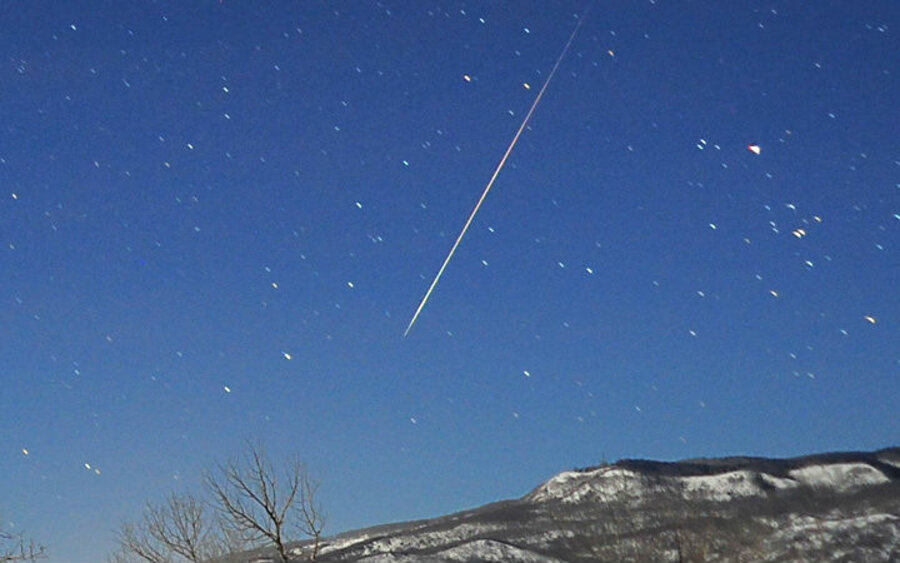First meteor shower of 2015 peaks Saturday night
Loading...
Grab a coat and head outside: The first meteor shower of the new year is set to peak tonight.
The annual Quadrantid meteor shower is popular with star watchers, who can see up to 80 meteors an hour, NASA says. Plus, Quadrantids are known for their “fireball meteors,” which are brighter and last longer than an average meteor streak.
This year, however, a bright, near-full moon is complicating matters for those who would like to wish on a shooting star – as are forecasts of cloudy skies in the eastern United States. Central and Southwest stargazers should still have a clear view, The Washington Post reports.
The Quadrantids, which NASA says are the remnants of asteroid 2003 EH1, get their name from the now obsolete Quadrans Muralis constellation, identified by French astronomer Jerome Lalande in 1795. The first Quadrantid meteor shower was reported in 1825.
Some astronomers hypothesize that the asteroid, discovered in 2003 by NASA astronomer Peter Jenniskens, actually may be a piece of an “extinct” comet.
“Some astronomers say that this asteroid is really a piece of an old, 'extinct' comet, perhaps a comet that was recorded by Chinese, Korean and Japanese observers during the years 1490-91,” writes Space.com.
The Quadrantids aren’t the only items of interest visible in the night sky this weekend. Comet Lovejoy, which was discovered in August, is visible with binoculars and, for those far away from city lights, the naked eye, the Monitor’s Pete Spotts reports. The comet, which is expected to make its closest approach to Earth on Jan. 7, is rising higher in the northern sky. By Jan. 7, it will be appearing to the right of the bottom half of Orion’s bow, above the constellation Eridanus.
To view Saturday night’s meteor shower, NASA suggests finding a spot away from street lights.
“Lay flat on your back with your feet facing northeast and look up, taking in as much of the sky as possible. In less than 30 minutes in the dark, your eyes will adapt and you will begin to see meteors,” NASA says. “Be patient – the show will last until dawn, so you have plenty of time to catch a glimpse.”
Oh, and bundle up out there, star watchers. It’s January, after all.





